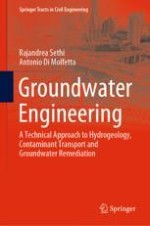This textbook employs a technical and quantitative approach to explain subsurface hydrology and hydrogeology, and to offer a comprehensive overview of groundwater-related topics such as flow in porous media, aquifer characterization, contaminant description and transport, risk assessment, and groundwater remediation. It describes the characterization of subsurface flow of pristine and polluted water and provides readers with easily applicable tools for the design of water supply systems, drinking-water source protection, and remediation interventions. Specific applications range from groundwater exploitation as a drinking water supply to the remediation of contaminated aquifers, from the definition and safeguarding of drinking-water sources to the assessment of human health risks in connection with groundwater contamination events.
The book represents an ideal learning resource for upper-undergraduate and graduate students of civil engineering, environmental engineering, and geology, as well as practitioners in the fields of water resource management and environmental protection who are interested in groundwater engineering and technical hydrogeology.
